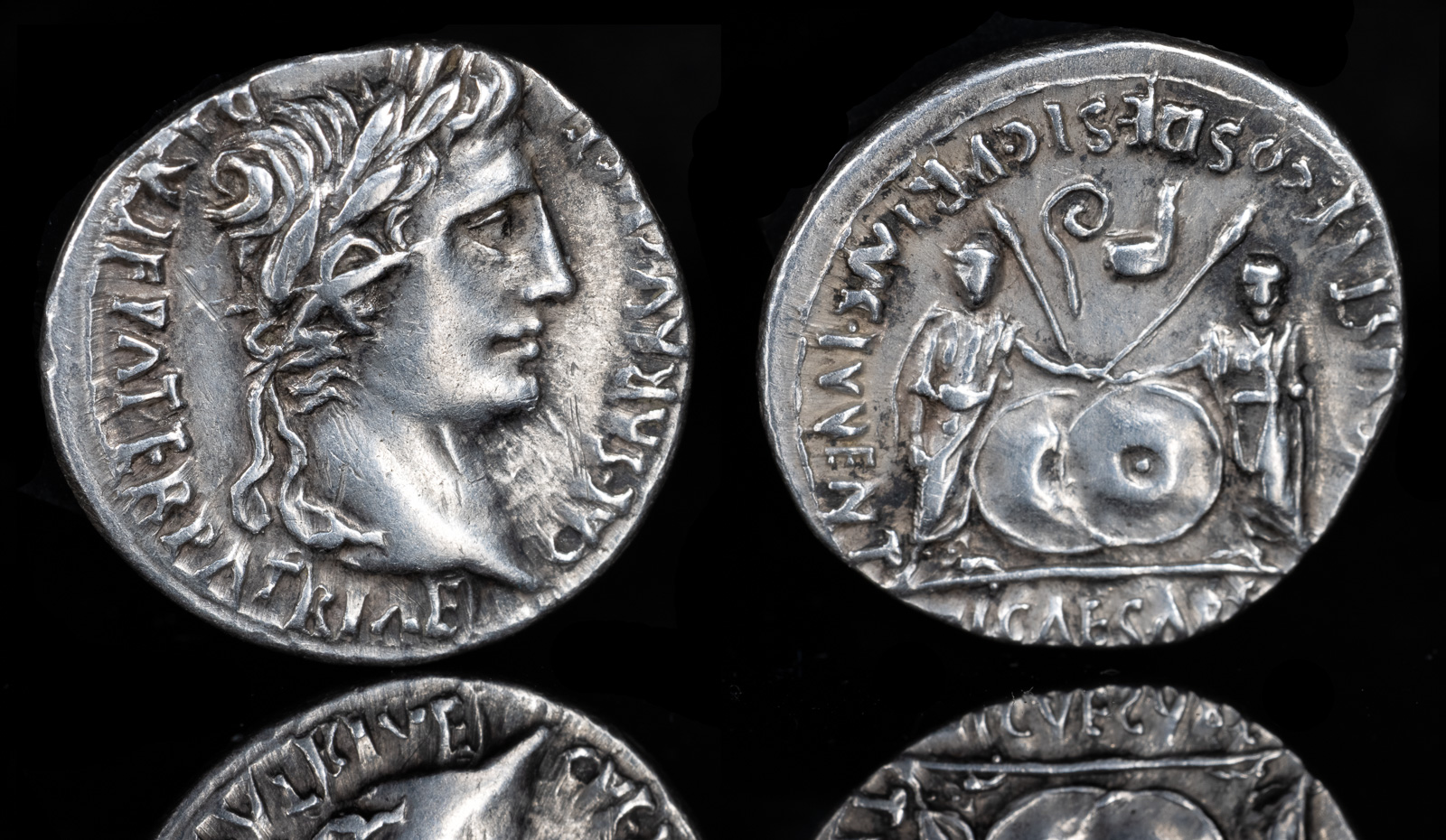Lituus
View All Tags
The lituus was most prominently used by augurs during religious ceremonies to mark and define the boundaries of the sky. Augurs were responsible for observing and interpreting the behavior of birds, which was believed to provide omens from the gods. When an augur was conducting these rituals, he would hold the lituus while walking in a designated direction to designate the ritual’s area and to indicate the direction in which he was looking for signs. The staff helped delineate the sacred space and guided the augur’s observation.
Additionally, the lituus was used during the formal auspices taken by Roman magistrates, especially before major decisions like the declaration of war or the passage of new laws. The use of the lituus in these settings reinforced the idea that political decisions were made under divine scrutiny and approval. It symbolized the link between religious authority and the power of the state.

AUGUSTUS (27 BCE-14 CE)
Denarius. Lugdunum.
19mm 3.77g
Obv: CAESAR AVGVSTVS DIVI F PATER PATRIAE. Laureate head right.
Rev: AVGVSTI F COS DESIG PRINC IVVENT / C L CAESARES.
Caius and Lucius Caesar standing facing; two shields, two sceptres; lituus and simpulum above.
RIC² 209